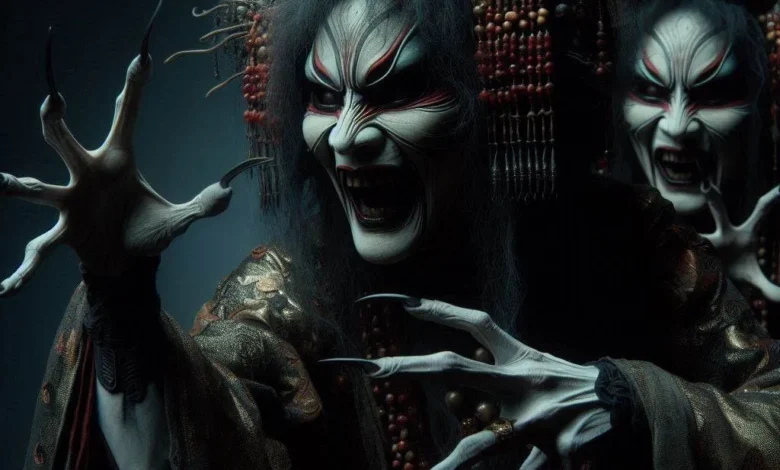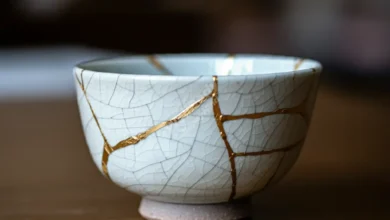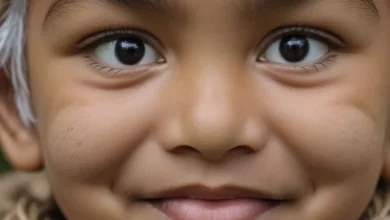Butoh: The Japanese Dance of Darkness for Emotional Insight

Have you ever felt the need to express emotions that words can’t capture? Enter Butoh, a unique Japanese dance form that offers a powerful way to explore our inner darkness and gain emotional insight.
Butoh, also known as the “dance of darkness,” is not your typical dance style. It’s a raw, expressive art form that emerged in post-World War II Japan. This unconventional dance invites performers and audiences alike to confront their deepest emotions and hidden truths.
In this article, we’ll dive into the world of Butoh and discover how it can be a tool for emotional exploration and personal growth.
The Origins of Butoh
A Dance Born from Chaos
Butoh emerged in the aftermath of World War II in Japan. It was a time of great social and cultural upheaval. The country was grappling with the trauma of war and rapid modernization.
Two visionary artists, Tatsumi Hijikata and Kazuo Ohno, are credited as the founders of Butoh. They sought to create a new form of expression that could capture the complex emotions of post-war Japan.
A Fusion of Influences
Butoh is a unique blend of various influences:
- Traditional Japanese art forms
- Western modern dance
- Post-war avant-garde movements
This fusion resulted in a dance style unlike anything seen before. It challenged conventional notions of beauty and movement in dance.
Timeline of Butoh’s Development
Here’s a brief timeline of key events in Butoh’s early years:
- 1959: Tatsumi Hijikata’s first Butoh performance, “Kinjiki” (Forbidden Colors)
- 1960s: Development of Butoh techniques and philosophy
- 1970s: Kazuo Ohno gains recognition, bringing a softer approach to Butoh
- 1980s: Butoh begins to spread internationally
Core Principles of Butoh
Butoh is guided by several key principles that set it apart from other dance forms. Let’s explore these fundamental concepts:
Embracing the Darkness Within
At its heart, Butoh is about confronting and expressing the parts of ourselves we often hide. It encourages dancers to:
- Explore taboo emotions and experiences
- Challenge societal norms and expectations
- Reveal vulnerable aspects of the human condition
Slow, Controlled Movements
Unlike many dance styles that prioritize speed and agility, Butoh often features:
- Extremely slow, deliberate movements
- Intense focus on each muscle and gesture
- A sense of time being stretched or suspended
This approach allows both performers and audience to deeply engage with each moment of the dance.
Improvisation and Individual Expression
While there are some common techniques, Butoh places great emphasis on:
- Personal interpretation and creativity
- Responding to internal impulses and emotions
- Creating unique, authentic movements
There’s no “right” way to do Butoh. Each performance is a unique expression of the dancer’s inner world.
Connection with Nature and Primal Instincts
Butoh seeks to reconnect dancers with:
- The natural world and its rhythms
- Primal, instinctive movements
- A sense of being part of something larger than oneself
This connection often results in movements inspired by animals, elements, or natural phenomena.
By understanding these core principles, we can begin to grasp how Butoh serves as a powerful tool for emotional insight and self-discovery. In the next section, we’ll explore the distinctive aesthetics that make Butoh performances so visually striking.
The Aesthetics of Butoh
Butoh’s visual elements are as striking and unconventional as its philosophy. Let’s explore the unique aesthetics that make Butoh performances so memorable.
White Body Paint and Minimalist Costumes
One of the most recognizable features of Butoh is the use of:
- White body paint covering the entire body
- Minimal or no clothing
- Shaved heads (often, but not always)
This stark appearance serves to erase the dancer’s individual identity, allowing them to embody various forms and emotions more freely.
Grotesque and Beautiful Juxtapositions
Butoh challenges our perceptions of beauty by:
- Embracing distorted facial expressions
- Using contorted body positions
- Combining graceful movements with abrupt, jarring gestures
This blend of the beautiful and the grotesque reflects Butoh’s aim to explore the full range of human experience.
Unconventional Performance Spaces
Unlike traditional dance forms, Butoh often takes place in:
- Outdoor natural settings (forests, beaches, mountains)
- Urban environments (streets, abandoned buildings)
- Non-traditional indoor spaces
These unique venues help create an immersive experience for both performers and audience.
Here’s a comparison of Butoh aesthetics with more traditional dance forms:
| Aspect | Traditional Dance | Butoh |
|---|---|---|
| Costume | Elaborate, colorful | Minimal, often just white paint |
| Makeup | Enhances facial features | Masks individual identity |
| Setting | Formal stage | Any space, often unconventional |
| Movement | Graceful, fluid | Can be grotesque, slow, or erratic |
| Expression | Often joyful or neutral | Explores full range of emotions |
Butoh as a Tool for Emotional Insight
Butoh offers a unique approach to exploring and understanding our emotions. Let’s delve into how this dance form can be used for emotional growth and self-discovery.
Exploring Suppressed Emotions
Butoh provides a safe space to:
- Confront feelings we often avoid in daily life
- Express emotions that may be socially unacceptable
- Discover hidden aspects of our psyche
By embodying these emotions through movement, we can gain new perspectives on our inner world.
Confronting Personal and Collective Trauma
Butoh can be a powerful way to:
- Process difficult experiences
- Connect with shared cultural or historical traumas
- Transform pain into artistic expression
Many Butoh performances deal with themes of war, loss, and societal upheaval, reflecting its origins in post-war Japan.
Mindfulness and Body Awareness
Practicing Butoh cultivates:
- Deep awareness of our body and its sensations
- Presence in the moment
- Connection between physical movement and emotional states
This heightened body awareness can lead to greater emotional intelligence and self-understanding.
Catharsis through Movement
Butoh offers catharsis by:
- Allowing for the physical release of pent-up emotions
- Providing a non-verbal outlet for complex feelings
- Creating a sense of emotional purging or cleansing
Many practitioners report feeling emotionally lighter after a Butoh session.
Practicing Butoh for Personal Growth
You don’t need to be a professional dancer to benefit from Butoh. Here are some ways to incorporate its principles into your life for personal growth and emotional insight.
Basic Exercises for Beginners
Try these simple Butoh-inspired exercises at home:
- Slow Walk: Move across a room as slowly as possible, paying attention to every muscle movement.
- Emotional Sculpting: Choose an emotion and let it shape your body posture.
- Nature Embodiment: Imagine becoming an element of nature (tree, water, wind) and move accordingly.
- Face Exploration: Make extreme facial expressions, holding each for 30 seconds.
Letting Go of Self-Consciousness
To fully experience Butoh, it’s crucial to:
- Release judgments about how you look or move
- Embrace awkwardness and discomfort
- Focus on internal sensations rather than external appearance
Remember, in Butoh, there’s no “right” or “wrong” way to move.
Integrating Butoh Principles into Daily Life
You can apply Butoh’s teachings to everyday situations:
- Practice mindful movement in routine activities
- Use body awareness to understand your emotional states
- Allow yourself to fully express emotions in safe, private spaces
- Approach challenges with the curiosity and openness of a Butoh dancer
By incorporating these practices, you can gain deeper emotional insight and foster personal growth, even without formal Butoh training.
The Global Spread of Butoh
Since its inception in Japan, Butoh has gained international recognition and influenced dancers and artists worldwide. Let’s explore how this unique art form has spread beyond its origins.
Butoh’s Influence on Contemporary Dance
Butoh has left a significant mark on the global dance scene:
- Many contemporary choreographers incorporate Butoh elements into their work
- Its focus on emotional expression has inspired new approaches to movement
- Butoh’s unconventional aesthetics have challenged traditional notions of dance
This influence extends beyond dance, touching other art forms like theater, performance art, and even fashion.
Notable Butoh Artists and Troupes Around the World
While Butoh originated in Japan, it has found practitioners globally:
- Sankai Juku (Japan): One of the most renowned Butoh troupes internationally
- Eiko and Koma (USA): Japanese-born duo known for their slow, meditative performances
- Ushio Amagatsu (Japan/France): Founder of Sankai Juku, bringing Butoh to European audiences
- Yumiko Yoshioka (Germany): Prominent in spreading Butoh in Europe
- Diego Piñón (Mexico): Developed “Body Ritual Movement,” blending Butoh with other practices
Butoh Festivals and Workshops
The global Butoh community comes together through various events:
- CAVE New York Butoh Festival: One of the longest-running Butoh festivals outside Japan
- Himalaya Butoh Festival (India): Bringing Butoh to South Asian audiences
- London Butoh Festival: Showcasing international Butoh artists in the UK
- Numerous workshops and retreats offered worldwide, allowing people to experience Butoh firsthand
Challenges and Criticisms of Butoh
Despite its growth, Butoh faces several challenges and criticisms. It’s important to consider these aspects for a well-rounded understanding of the art form.
Cultural Appropriation Concerns
As Butoh spreads globally, some issues arise:
- Questions about non-Japanese practitioners authentically representing the art form
- Concerns over commercialization and loss of Butoh’s original spirit
- Debates on preserving cultural context vs. allowing natural evolution of the practice
Misinterpretation of Principles
Butoh’s complexity can lead to misunderstandings:
- Some view it merely as bizarre or shocking performance, missing its deeper meanings
- Others may over-intellectualize Butoh, losing sight of its emphasis on bodily experience
- There’s a risk of trivializing trauma when performers tackle heavy themes without proper understanding
Accessibility and Learning Curve
Butoh can be challenging for newcomers:
- Its unconventional nature may be off-putting to some
- Limited access to qualified teachers outside major cities
- The physical and emotional intensity of Butoh can be overwhelming for some participants
Here’s a balanced look at some pros and cons of Butoh:
| Pros | Cons |
|---|---|
| Offers unique emotional expression | Can be physically demanding |
| Encourages self-exploration | May be misunderstood by audiences |
| Challenges artistic norms | Limited mainstream appeal |
| Fosters mind-body connection | Potential for cultural appropriation |
| Can be therapeutic | Steep learning curve for beginners |
Conclusion
Butoh: A Unique Approach to Dance and Emotional Exploration
Butoh stands out as a powerful and unconventional art form that goes beyond mere dance. It offers a unique pathway to:
- Emotional insight and self-discovery
- Challenging societal norms and personal limitations
- Exploring the full spectrum of human experience through movement
Encouragement for Further Exploration
If you’re intrigued by Butoh, consider:
- Attending a Butoh performance or workshop in your area
- Trying some of the simple exercises mentioned earlier
- Researching more about Butoh’s history and philosophy
Remember, Butoh is not just for professional dancers. Its principles can be applied by anyone seeking deeper self-understanding and emotional expression.
Final Thoughts on Butoh’s Relevance Today
In our fast-paced, often disconnected world, Butoh offers:
- A way to reconnect with our bodies and emotions
- Tools for processing complex feelings and experiences
- A reminder of the power of slowing down and being present
Whether you become a devoted practitioner or simply incorporate some of its ideas into your life, Butoh has the potential to enrich your emotional landscape and offer new perspectives on the human experience.
By exploring this Japanese dance of darkness, we might just find a new light shining on our inner worlds.
Additional Resources
For those intrigued by Butoh and eager to delve deeper into this fascinating art form, here’s a curated list of resources to continue your exploration:
Recommended Books on Butoh
“Butoh: Shades of Darkness” by Jean Viala and Nourit Masson-Sekine
- A comprehensive overview of Butoh’s history and key figures
“Hijikata Tatsumi and Ohno Kazuo” by Sondra Fraleigh
- Detailed biographies of Butoh’s founders and their philosophies
“Butoh Dance Training: Secrets of Japanese Dance through the Alishina Method” by Juju Alishina
- A practical guide for those interested in learning Butoh techniques
“Butoh: Metamorphic Dance and Global Alchemy” by Sondra Fraleigh
- Explores Butoh’s global influence and its connections to other art forms
Notable Butoh Performances to Watch
“Sankai Juku: Hibiki”
- A mesmerizing performance showcasing the beauty of group Butoh
“Kazuo Ohno: La Argentina Sho”
- A classic solo performance by one of Butoh’s founders
“Eiko & Koma: River”
- An example of Butoh-inspired work in a natural setting
“Ushio Amagatsu: Unetsu”
- A powerful demonstration of Butoh’s emotional intensity
“Yumiko Yoshioka: Before the Dawn”
- A contemporary interpretation of Butoh by a female artist
Remember, experiencing Butoh live can be profoundly different from watching recordings. If possible, seek out live performances or workshops in your area for a more immersive understanding of this unique art form.
As you explore these resources, keep an open mind and allow yourself to engage with Butoh on both an intellectual and emotional level. Each person’s journey with Butoh is unique, and what resonates with you may be different from others’ experiences.
Whether you’re drawn to Butoh as a potential practice, an art form to appreciate, or a philosophical concept to ponder, these resources offer a solid foundation for your continued exploration of the Japanese dance of darkness.
By engaging with Butoh, you’re not just learning about a dance form – you’re opening yourself to a new way of understanding movement, emotion, and the human experience. Enjoy your journey into the world of Butoh!



